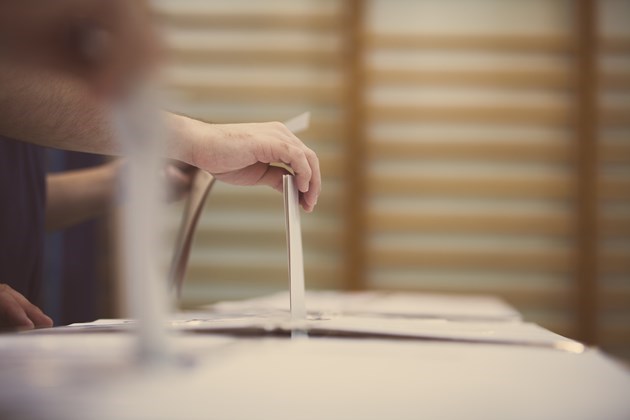With the Tk’emlúps te Secwepemc (TteS) election coming to a close Saturday, Nov. 10, we thought we would look more closely at how First Nations elections work.
Loreen Suhr, election officer with Loreen Suhr & Associates based out of Prince George, will be overseeing the TteS election this weekend. She says the differences in the election process depend on the policies of each individual band.
For instance, while the TteS policy states individuals must be 18 years old before they are permitted to vote in their election, some bands allow members to vote at age 16. It is up for the individual bands to make that decision, Suhr says.
Another big difference is the bands hold the responsibility of setting regulations on who can nominate a Chief and council member for the election, as well as who can run for the role of Chief or councillor, and even how many positions one may hold. For example, some bands allow non-band members to nominate someone for the position of Chief, and in some areas, non-band members are permitted to become a Chief or council member. It can also be put into policy within a band, that a candidate can hold both a Chief and a councillor position at the same time.
It is up to the individual bands to make these decisions, based on their own traditions, beliefs and what they think will best suit their community, Suhr says.
In TteS, all candidates must be a band member; they can only be nominated by a band member, and they can only hold one position at any given time. Candidates must also prove they are not in arrears with the band, and have not declared bankruptcy or been charged with any major offences. If a nominee cannot prove they are clear of even one these requirements, they will not be permitted to run for council, Suhr tells KamloopsMatters.
First Nation bands also have the ability to determine how long candidates will hold their positions, as well as how many councillor seats will be available to be filled.
TteS also has it within its policy that an outside election team must be hired to oversee the election. In the case of the current election, Suhr’s company has been called in. The chosen officiants must have no connection to TteS outside of their work on the elections.
It is Suhr’s policy to have a completely open and transparent election; this means that even the counting of the ballots is done in the open (TteS uses paper ballots). In fact, Suhr says they encourage the community to come out and watch the counting of the ballots and explains when invalid ballots are announced, she stands and shows the crowd and explains why it's invalid.
There is a long list of differences when it comes to First Nations elections and municipal ones; however, for the most part, TteS mimic many of the same standards held in Kamloops municipal elections.
Those who would like to see first-hand who will become the new Chief of TteS are reminded that voting ends at 8 p.m. on Nov. 10 at Moccasin Square Garden, and the ballot counting will begin at around 9 p.m. to ensure all mail-in ballots and early-voting ballots are accounted for.
The results of the election are expected no later than 11 p.m.



